
 |
|
#1
|
|||
|
|||
|
Hello
Here is a ALDIS type of signal lamp manufacturing English, 2nd war. This lamp allows for the precise morse signaling through the manipulator which is attached to the lamp transport the box cover. This lamp was also made during the conflict in Canada and Australia. 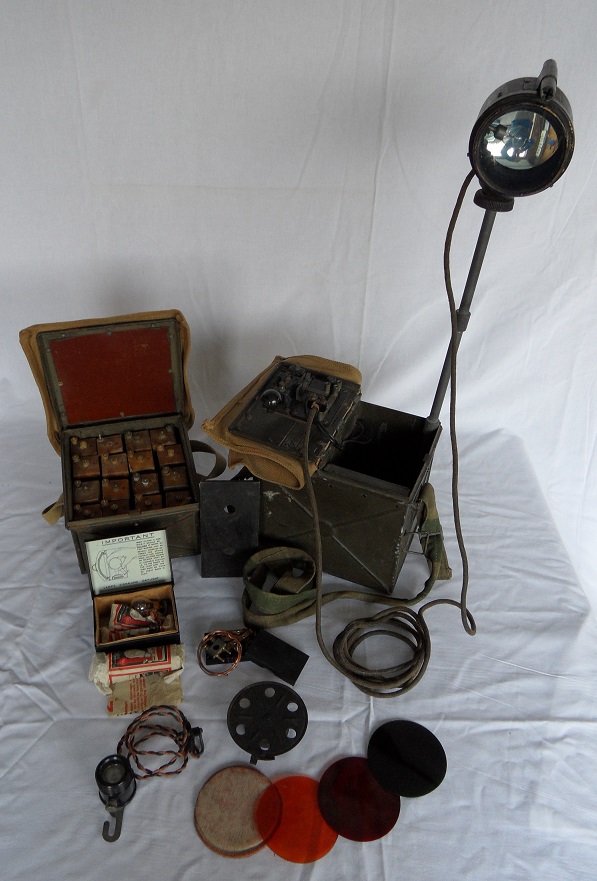 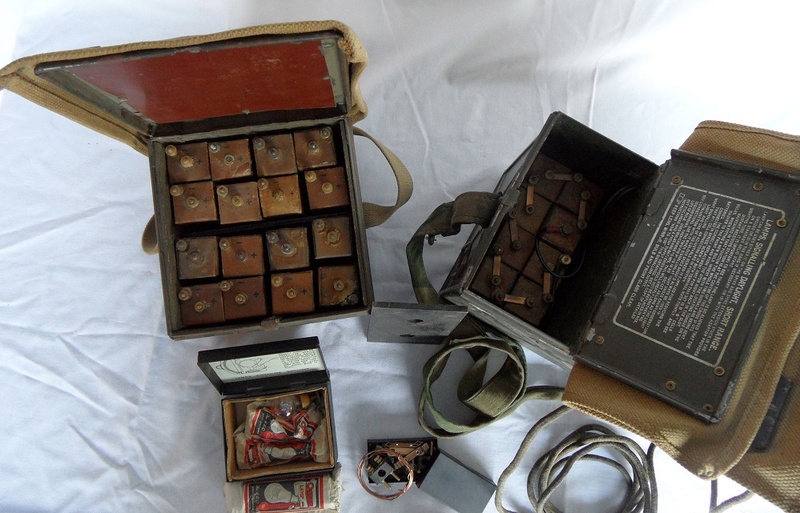 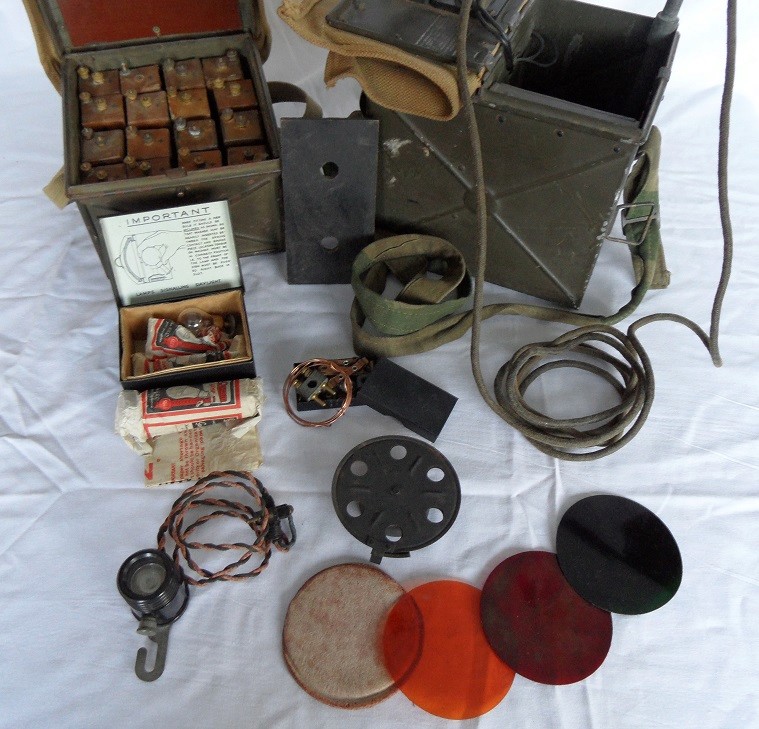 overviews of the complete kit |
|
#2
|
|||
|
|||
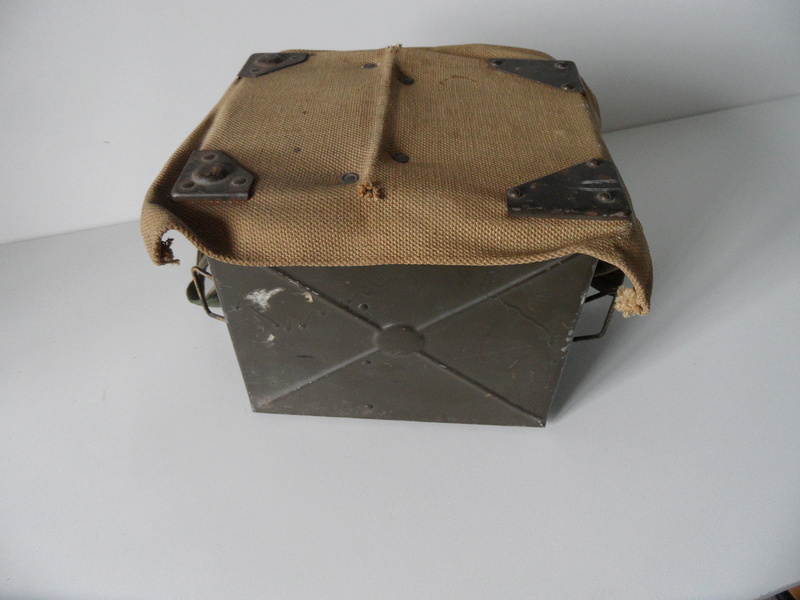 Lamp transport box and accessories has two compartments. 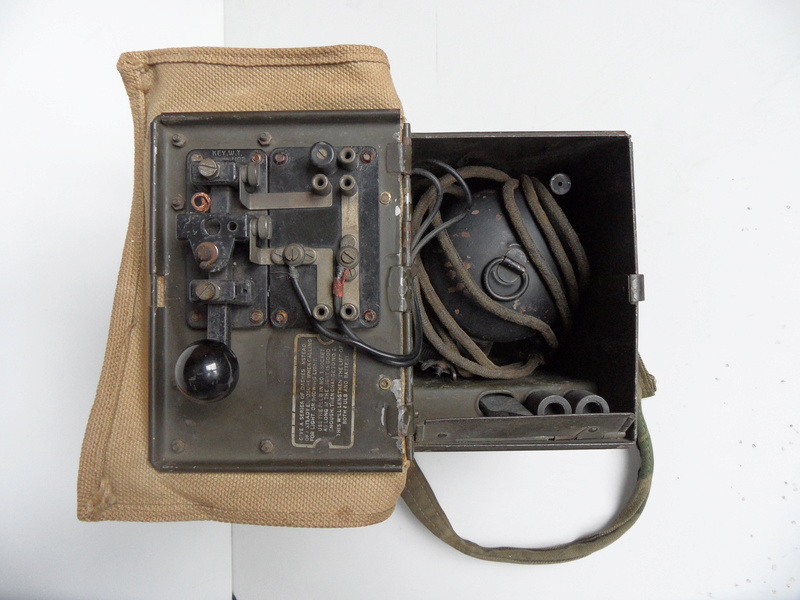 Compartment for the lamp, the color filters, and removable foot into three parts. On the cover appears Morse manipulator who is permanently fixed. 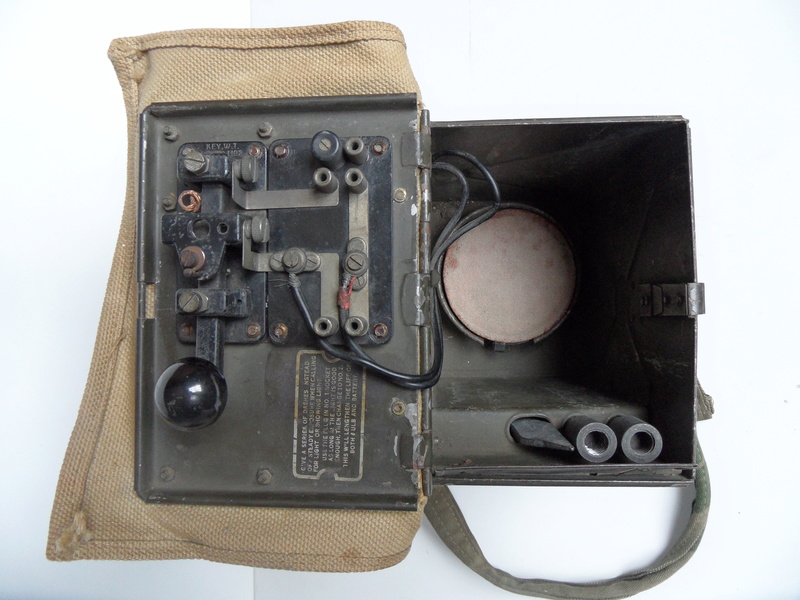 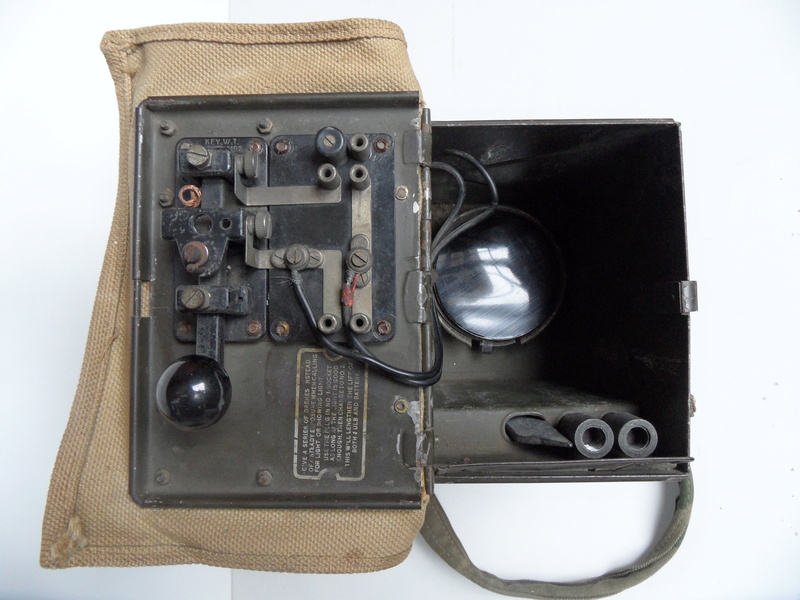 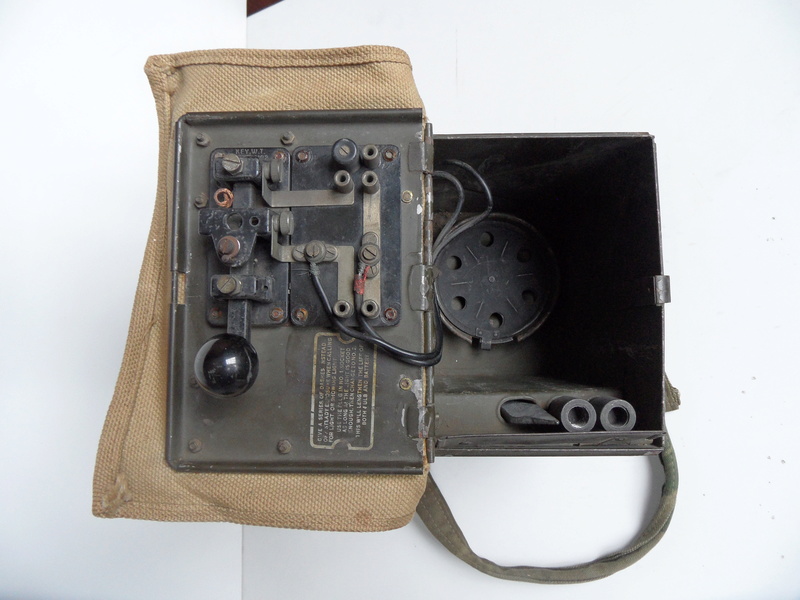 Location in the bottom of the box for the color filters and the light attenuator, protected by a foam ring. 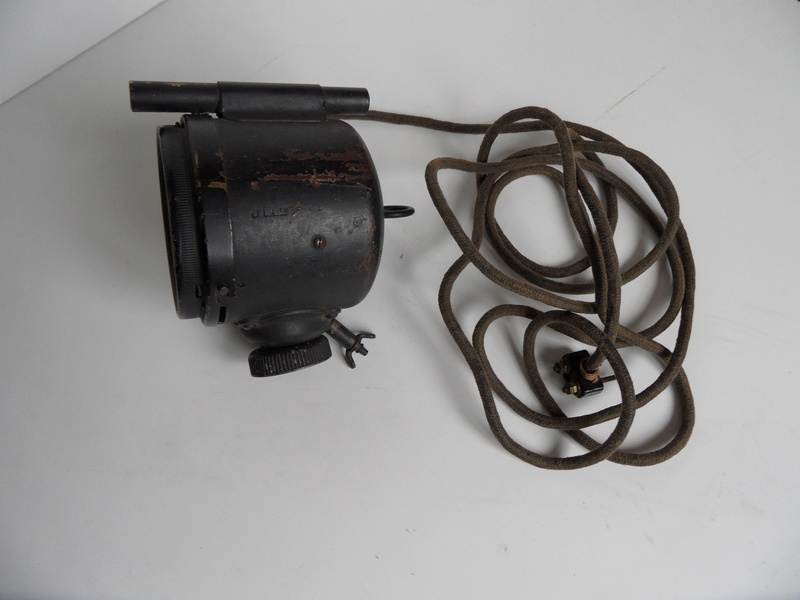 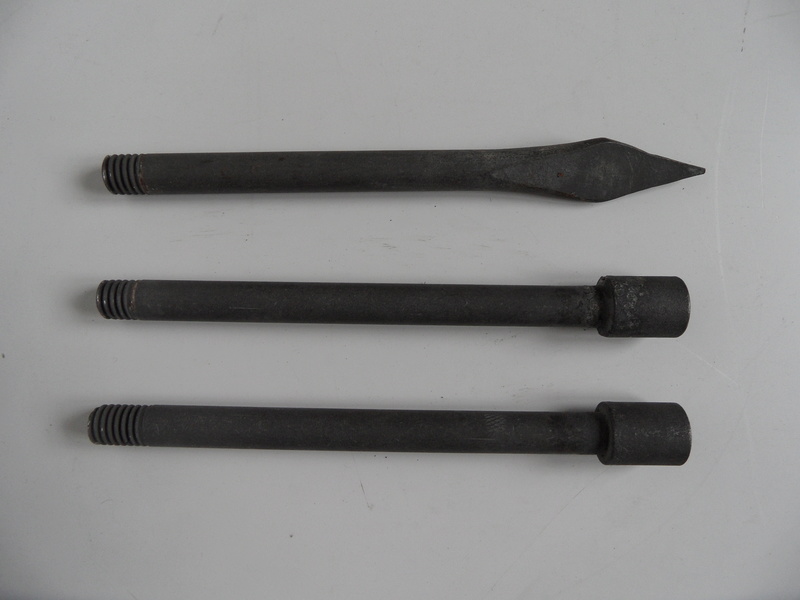 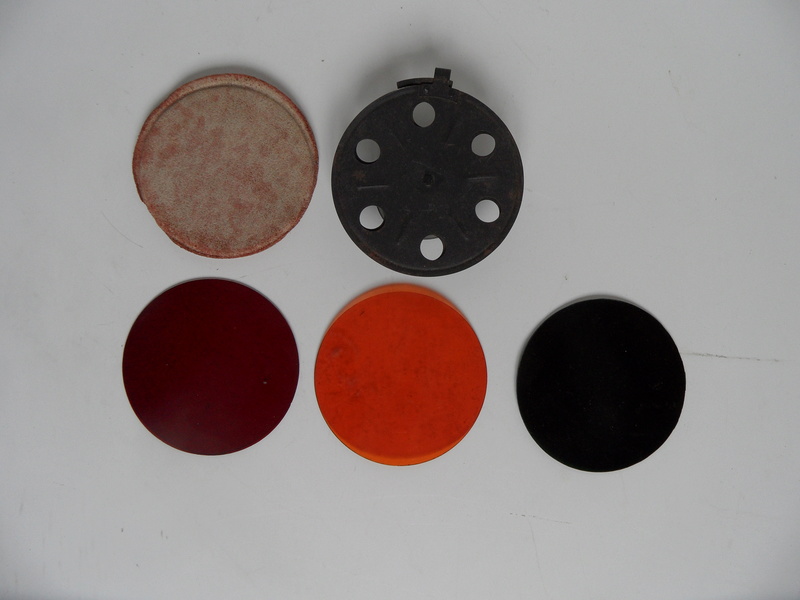 Lamp are with power cord and plug housing are output with color filters, light attenuator, protective foam washer and stand in three parts |
|
#3
|
|||
|
|||
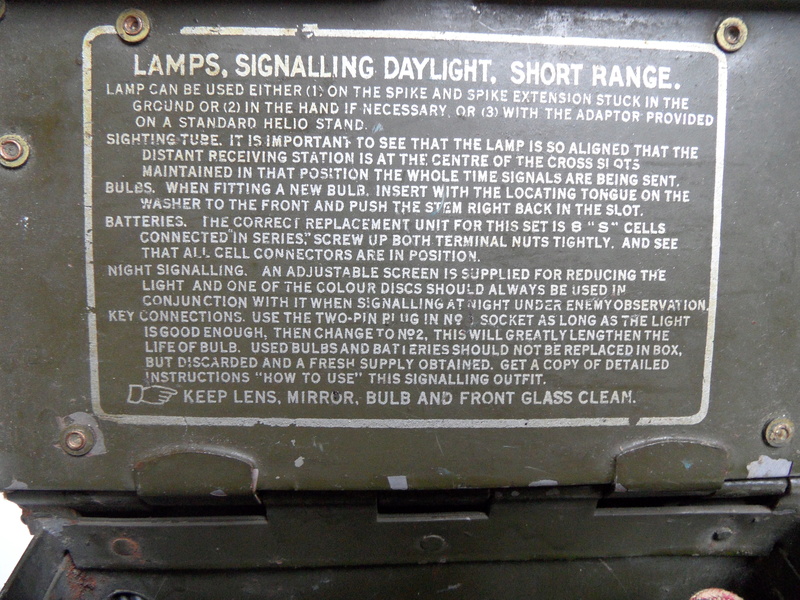 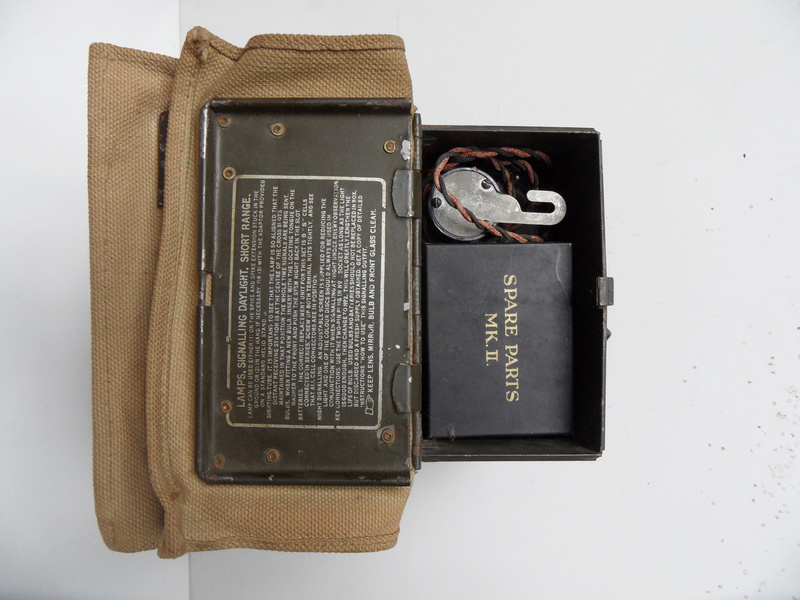 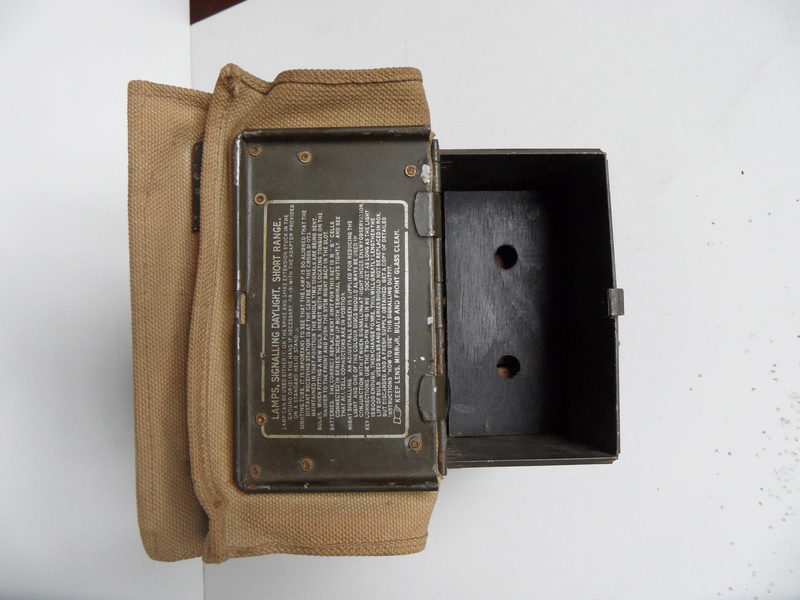 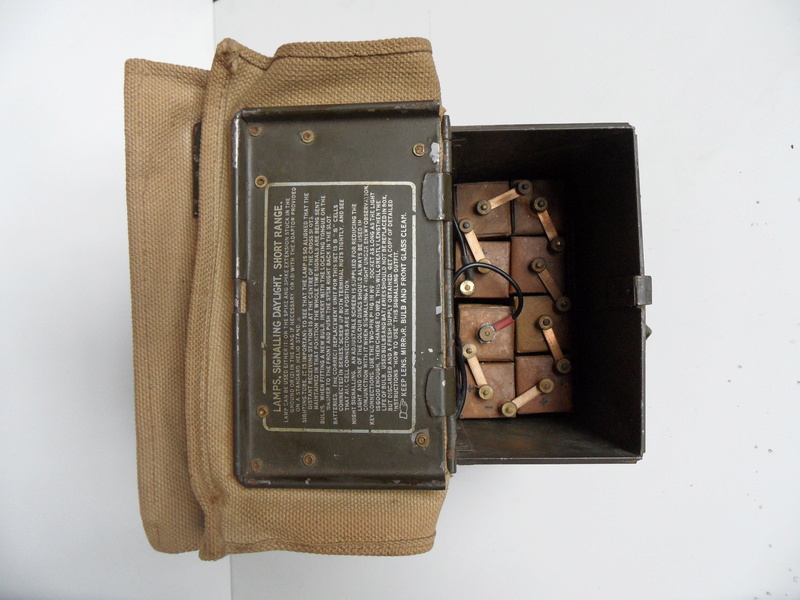 Compartment for the lamp power batteries and for storage of various accessories. On the cover appears how to use the lamp. 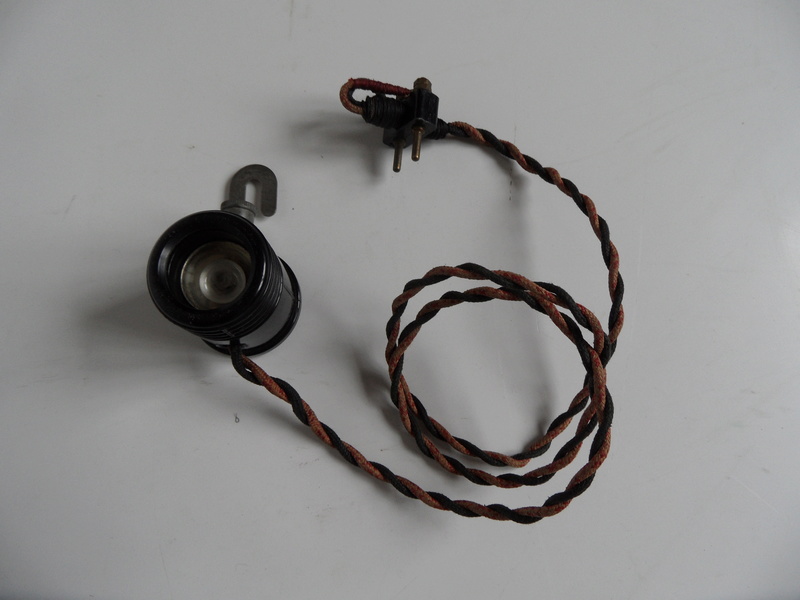 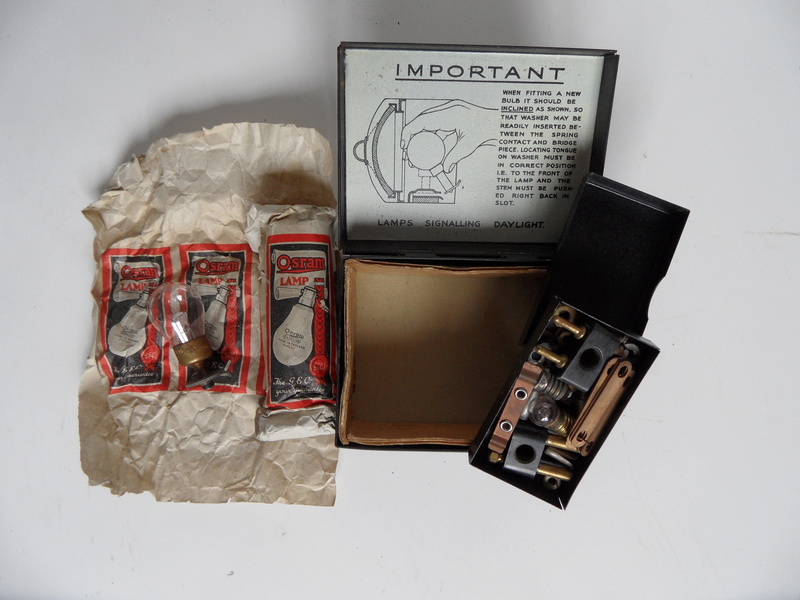 Accessories out of their compartments. Small lamp which allows mounting the night main assembly. spare bulb box and parts for maintenance of this set. 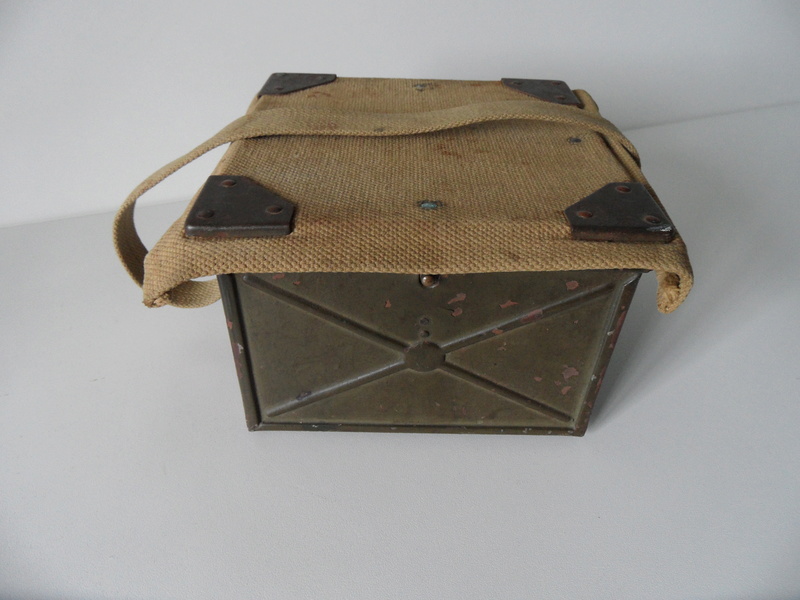 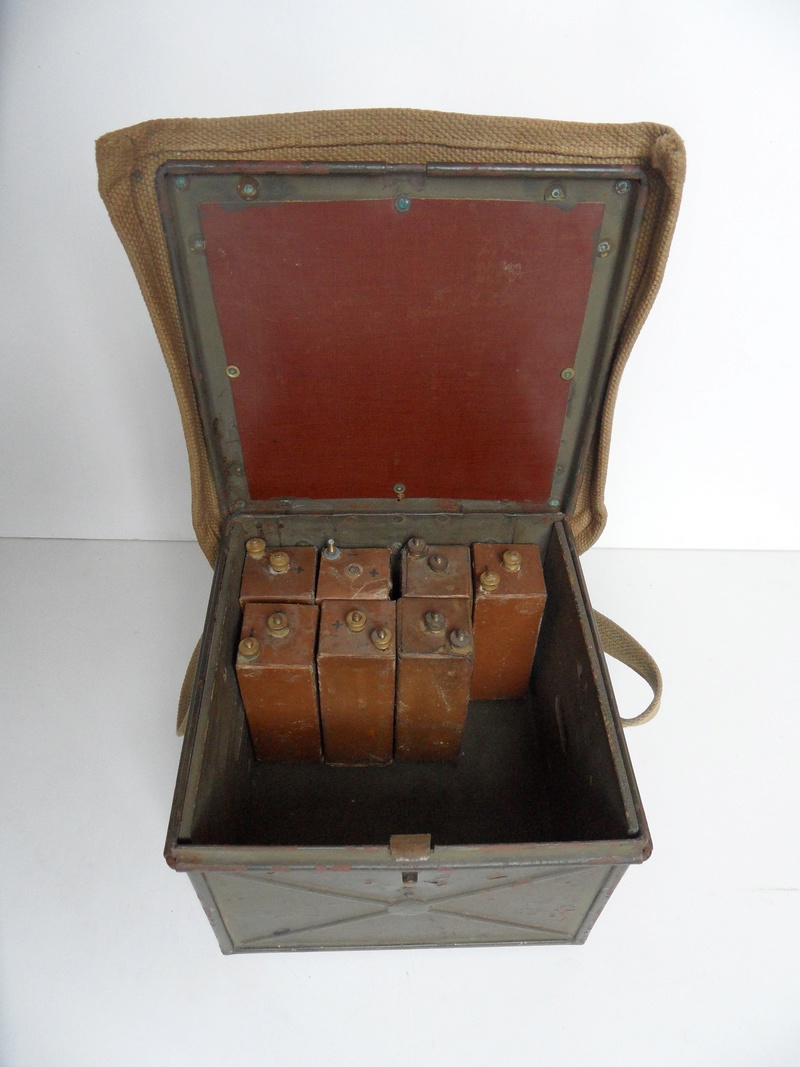 box for additional batteries of the lampe. It has only one compartment, and is smaller in size. On the inner side of the box is wood protection, and under the cover. 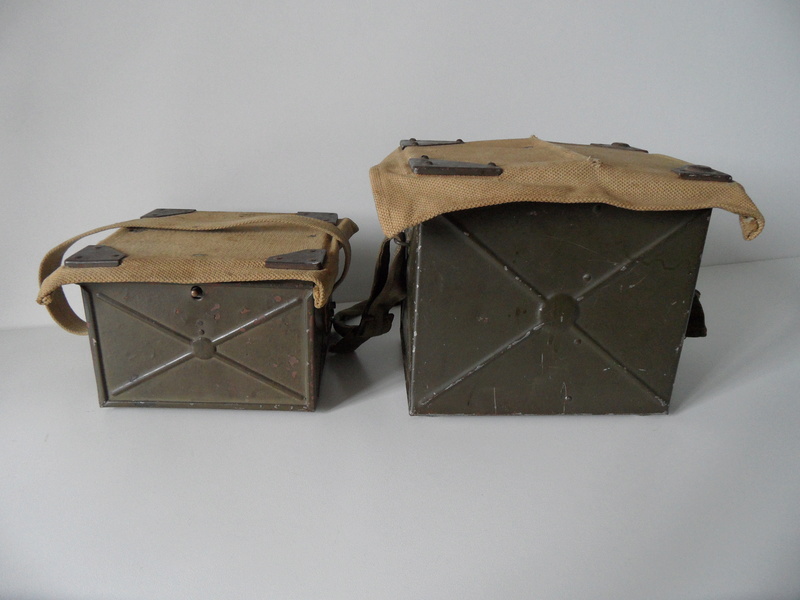 Comparative size of two boxes constituting this set. |
|
#4
|
|||
|
|||
|
|
|
#5
|
|||
|
|||
|
|
|
#6
|
|||
|
|||
|
|
|
#7
|
||||
|
||||
|
Nice set, thanks for posting!
 I only have the large box and it is empty on the battery side. All parts in the other compartment are present. Now I have an idea what is missing and what to look for.  Cheers,
__________________
Marc van Aalderen Daimler Dingo Mk1B 1941 Daimler Armoured Car Mk1 1943 Daimler Ferret Mk1/1 1959 Ford Universal Carrier No2 MkII* 1944 Ford GPW British Airborne 1944 Lightweight 10 Cwt Trailer SS Cars Ltd 1944 Anti-Tank Gun 6 Pdr 7 Cwt MkII 1942 Austin Tilly 1943 Austin K6A Breakdown 1944 Daf Trailer AT16-24-1NL 1977 Daf 2100Turbo 1982 |
|
#8
|
|||
|
|||
|
|
|
#9
|
|||
|
|||
|
|
|
#10
|
||||
|
||||
|
What a superb example of the equipment & accessories, thank you for sharing.
I would imagine this was a late war production because the Key W.T 8 Amp No.2 is largely Bakelite indicating it is probably No.2 Mk 3 The original key was entirely machined metal on a Bakelite base as you can see in Fig. 3. This was the No.2 Mk 1 but was not marked as Mk 1 (in the same way as a Series 1 Land Rover is not marked as Series 1) Later keys were cast metal, Mk 2 keys had less metal & Mk 3 even less. I have three Mk 1, two Mk 2 & two Mk 3 keys & much prefer the clunky rigid click of the Mk 1 than the softer feel of the later keys. I don't use them for visual signalling, they are in daily use on 2m, 4m & 80m amateur bands. As a boy in the 1950s I bought the basic set for 12/6 from Pride & Clarke, London. I robbed the key which I still use. I recently bought a scrap set just to get the Mk 1 key & saw the case still had the Pride & Clarke delivery label. Clive GW4MBS
__________________
Clive Elliott GW4MBS (Old) South Wales UK |
|
#11
|
||||
|
||||
|
I had a box full of the special bulbs OSRAM brand . 10 volt I think. I posted the bulbs to a chap in the UK he was teaching boy scouts Morse code with those lamps . Aussie disposals had WW2 dated NOS tripods back in the 1980s I bought two of them. The Australian lamps were made by PMG from memory , the box is not like the UK made sets in that it sort of looks like a thin casting rather than sheet steel. Morse speeds were limited because of the slow acting filament in the bulbs typically 10wpm or less. We had two set up at Corowa years ago . A ex army chap told me during training in Tasmania his unit would set up Aldis lamps between Launceston and Hobart , from Mt Barrow they would relay from mountain tops down to Mt Wellington , at night the range of these lamps was amazing. The larger type lamps are less common.
__________________
1940 cab 11 C8 1940 Morris-Commercial PU 1941 Morris-Commercial CS8 1940 Chev. 15cwt GS Van ( Aust.) 1942-45 Jeep salad Last edited by Mike K; 29-02-20 at 12:31. |
|
#12
|
||||
|
||||
|
What a classic example of what this forum is about in the sharing of information worldwide and reading people comment on it and expand the subje
Thank you Wendel
__________________
Robin Craig Home of the Maple Leaf Adapter 2 Canadian Mk1 Ferrets Kawasaki KLR250 CFR 95-10908 ex PPCLI Canadair CL70 CFR 58-91588 Armstrong MT500 serial CFR 86-78530 Two Canam 250s Land Rover S3 Commanders Caravan Carawagon 16 GN 07 Trailer Cargo 3/4 T 2WHD 38 GJ 62 |
|
#13
|
|||
|
|||
|
<Nitpick> It's a "Lucas" Lamp (named after its inventor, a Captain Lucas, and not the "Prince of Insufficient Light"), not an Aldis lamp. </Nitpick>
 The WW1 versions came in wooden cases (as did the WW2 Canadian version), and there was originally a 12V 'brick' battery to power them, later replaced by the use of a made-up set of eight 'X' or 'S' cells which were standard issue for field telephones, etc. so readily available. The 'S' cells, being manufactured 'dry' could be stored indefinitely but tended to leak once filled if laid on their sides (which they had to be to fit in the battery compartment). There should also be a similar (less tall) box with an insulating sheet in the lid that contained 16 replacement cells (two batteries worth) for replacement purposes. Other versions: the "Mounted Services" type, in two leather cases, and the late/post WW2 "Lamp, Signalling, Daylight, Lightweight" in a canvas bag. Then there was the 'Long Range' model powered by a 10 volt 16AH accumulator, which had a larger lamp assembly (requiring a bulb with a taller stalk to centre it in the mirror focus) and an optical sight.  Chris. |
|
#14
|
||||
|
||||
|
Found the nos tripods I bought years ago. Don't think they are Lucas lamp
Stand. Instrument. No.21 mk5 there is a round leather cap on top.Dated 1943
__________________
1940 cab 11 C8 1940 Morris-Commercial PU 1941 Morris-Commercial CS8 1940 Chev. 15cwt GS Van ( Aust.) 1942-45 Jeep salad |
|
#15
|
|||
|
|||
|
Quote:
The Mk.5 has been around for over a century: the one I just looked at (manufactured by Houghton Butcher (a famous camera company)) is a Mk.5 and dated 1916. The tripod should have a round wooden block on a string to protect the telescope 'jaws' against crushing when not in use, the leather bucket to cover the top (ditto), and a canvas shoulder sling (with a sleeve that fits over the legs) for carrying. (There was also a specialised bit of horse harness for the cavalry to carry tripods.) Chris. |
|
#16
|
|||
|
|||
|
Research Enterprises Ltd in Canada re-worked a lot of those no21mk5 instrument stands. The legs were shortened and the nomenclature on the head was either milled off or changed with the addition of REL and the Designation of C1A1 . There is some school of thought that they were for use with the no4T rifle setups.
|
|
#17
|
|||
|
|||
|
Rob
There seem to be no end to the useful and practical pieces the sniper pairs had available. The No.4T sniper rifle "program", for lack of a better word, had some very clever equipment ancillaries. The chest checklist included a handkerchief to wipe lenses. According to Peter Laidler, one of the most respected No.4T writers until his recent requirement to exchange his liberty for a debt to society, mentioned recycling No.4 butt plate springs as pocket screwdrivers. To your image of a shortened wooden tripod, the checklist states a conventional but quite long draw tube telescope. Your image of a wooden leg tripod makes more sense for prolonged training issue at a school or as range-use equipment. REL made an ingenious tiny folding stand with a pair of jaws to hold the telescope. But I doubt it would stay rigid enough after much handling.
__________________
Terry Warner - 74-????? M151A2 - 70-08876 M38A1 - 53-71233 M100CDN trailer Beware! The Green Disease walks among us! |
|
#18
|
|||
|
|||
|
Quote:
I have the remnants of some of those folding stands that were turned in for scrap. They were still in the supply system at least into the 70s or 80s, and had a NSN assigned to them. I have the "rainbow" tag from them. |
|
#19
|
|||
|
|||
|
Quote:
The more modern spotting scopes with prisms and larger object lenses were a lot easier to use, but wouldn't fit those tripods. Chris. (Competitively rubbish with a rifle, much better with a .22 revolver.) |
|
#20
|
||||
|
||||
|
Found a tiny makers stamp
WMC with a N underneath . N would be NSW FJS & Co Pty LTD 1943 is marked on the leather cap. Aussie disposals had some nice stuff back then . All they have now is ex West German army apparel and other junk. Few years back I did score a few hundred of the Canadian WW2 utility pouches very cheap .
__________________
1940 cab 11 C8 1940 Morris-Commercial PU 1941 Morris-Commercial CS8 1940 Chev. 15cwt GS Van ( Aust.) 1942-45 Jeep salad Last edited by Mike K; 02-03-20 at 05:16. |
|
#21
|
||||
|
||||
|
Found the 'stand lamps and helio mk 11'
Marked RMB 1943
__________________
1940 cab 11 C8 1940 Morris-Commercial PU 1941 Morris-Commercial CS8 1940 Chev. 15cwt GS Van ( Aust.) 1942-45 Jeep salad |
|
#22
|
||||
|
||||
|
This is what I've always known as an ALDIS lamp. Hand held and often used for signaling from one ship to another. Ron
|
|
#23
|
||||
|
||||
|
Found some contracts for the
Daylight Sig equipment components https://trove.nla.gov.au/newspaper/a...archTerm=stand lamps&searchLimits=l-category=Government+Gazette+Tenders+And+Contracts| ||l-decade=194
__________________
1940 cab 11 C8 1940 Morris-Commercial PU 1941 Morris-Commercial CS8 1940 Chev. 15cwt GS Van ( Aust.) 1942-45 Jeep salad |
 |
| Thread Tools | |
| Display Modes | |
|
|
 Similar Threads
Similar Threads
|
||||
| Thread | Thread Starter | Forum | Replies | Last Post |
| 25 pounder short | Mike K | The Gun Park | 7 | 08-07-17 17:58 |
| Short Snorter ? | r.morrison | WW2 Military History & Equipment | 0 | 02-11-13 21:11 |
| The NEW DAYLIGHT SAVINGS Date STARTED TODAY! | Vets Dottir | The Sergeants' Mess | 3 | 12-03-07 19:06 |
| Signalling flags | c. ladouceur (RIP) | The Carrier Forum | 1 | 03-12-03 12:49 |
| British Signal Lamp | Stev | WW2 Military History & Equipment | 1 | 04-11-03 08:19 |